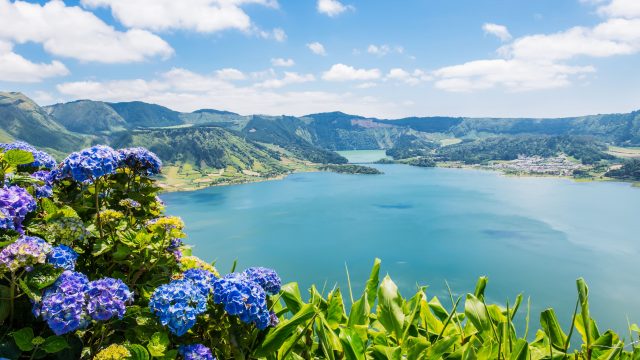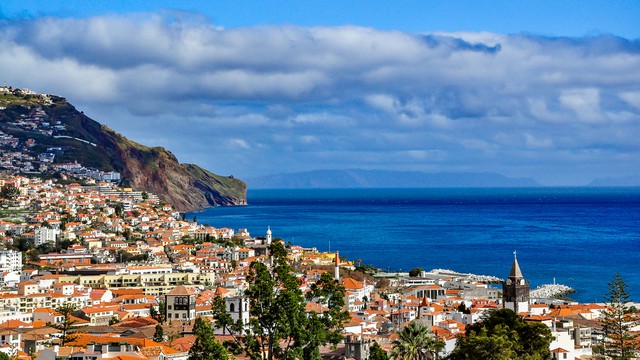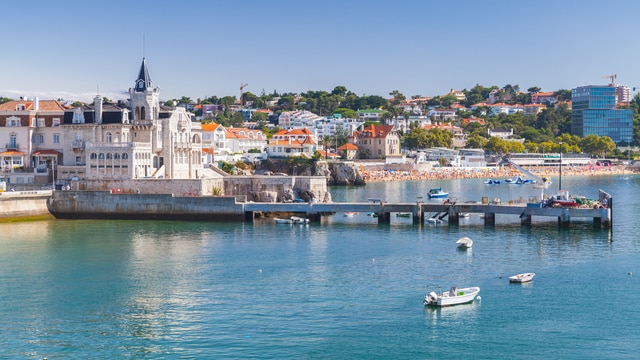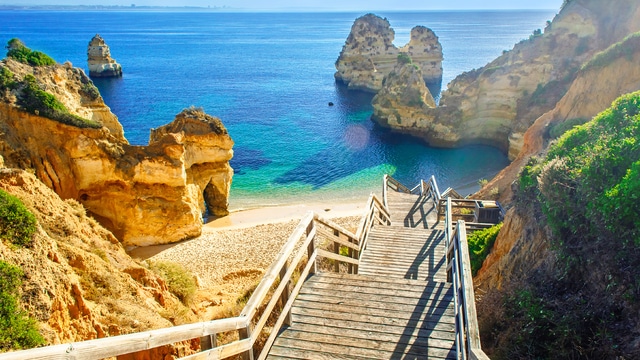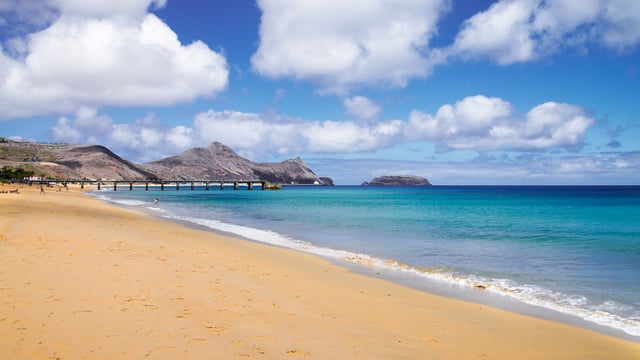What’s the climate like in the Azores?
The current climate of the Azores features average monthly temperatures ranging from highs of 26°C during the day to lows of 17°C. The average yearly temperature is around 21°C. At night, temperatures in the colder months average around 12°C and in the warmer months around 21°C.
The highest temperature recorded in the Azores in recent years was 29°C in August 2014. The lowest daytime temperature recorded was 12°C in February 2014.
On average, the Azores receives 977 mm of precipitation each year. For comparison, UK gets 701 mm of precipitation annually.
Curious about the climate in other parts of Portugal? Check out the weather and climate in places like Algarve, Lisbon, Albufeira, or have a look at other destinations in Portugal.
Best time to visit the Azores?
The best time to go for a sun holiday to the Azores is January and March through December. During this period, you'll have good temperatures and not too much rain, making it a great time to visit the Azores. In the other months of the year, there's too much rain or the temperature isn't ideal for a visit if you want sunny and pleasant weather.
Climate Table of the Azores
The climate table of the Azores shows the average temperatures, precipitation, and UV index per month. The table gives an overview of the average day and night temperatures in degrees Celsius, the total amount of precipitation in millimetres, the total snowfall in centimetres, and the UV index for each month. Precipitation is always measured as water, even if it's snow or hail.
Click on the month name to see more weather details, like daily averages, temperatures, and precipitation for the past years in that month.
- Average yearly temperature: 21°C
- Highest temperature: 26°C in August
- Lowest temperature: 17°C in February
- Precipitation: 977 mm per year, averaging 81 mm per month
- Driest months: 38 mm in July, 41 mm in June and 67 mm in August
- Wettest months: 119 mm in December, 111 mm in November and 106 mm in February
Average Temperature per Month in the Azores
This graph shows the average maximum temperatures per month in the Azores, Portugal. The temperatures are shown in degrees Celsius and the average is calculated based on the recorded temperatures per month from past years.
Average Precipitation per Month in the Azores
This graph shows how much precipitation the Azores, Portugal, gets on average per month. Precipitation is always measured as water, even if it's snow or hail. This makes it easy to compare how much has fallen, regardless of the form of precipitation. The amount of precipitation is measured in millimetres and the average is calculated based on the recorded precipitation per month from past years.
Average UV Index per Month in the Azores
This graph shows the average UV index per month in the Azores, Portugal. The UV index indicates the intensity of ultraviolet radiation and ranges from 0 to a maximum of 11.
Yearly Temperature in the Azores
This graph shows the average yearly temperature in the Azores, Portugal. The yearly temperature, expressed in degrees Celsius, is the average of all twelve monthly temperatures summed up for that year.
Total Yearly Precipitation in the Azores
This chart shows the total yearly precipitation in the Azores, Portugal, over the past few years. The total yearly precipitation, measured in millimetres, is the sum of all the rain that fell in the twelve months of that year.
More Climate Info About the Azores
The climate of the Azores is classified as subtropical and is best described as mild and humid. The average temperature is 20 degrees Celsius all year round. The Azores has four distinct seasons: spring, summer, autumn and winter.
Spring (March-May)
Spring in the Azores is characterised by mild temperatures and occasional showers. This is the time of year when most of the islands' vegetation comes to life, so it's a great time to hike and discover all this beauty. The average temperature at this time of year is 16-18 degrees Celsius.
Summer (June-August)
Summer is the hottest season in the Azores and the best time to visit if you are looking for warm weather. With average temperatures around 25 degrees Celsius, it is the perfect time is to head to the beach or take a dip in one of the island's many hot springs. It is also not uncommon for temperatures to exceed 30 degrees Celsius, especially in July and August.
Autumn (September-November)
Autumn is a transitional period in the Azores, with temperatures cooling but remaining mild. This is still a good time to visit if you want to enjoy outdoor activities, as rain falls during this season, but not too much yet. Average temperatures in autumn range from 18-22 degrees Celsius.
Winter (December-February)
Winter is the coolest time of year in the Azores, with average temperatures around 15 degrees Celsius. However, it is not uncommon for temperatures to drop below 10 degrees Celsius. Winter also has more days with rain than any other season.
Best Time to Visit the Azores
The Azores are a group of stunningly beautiful islands in the middle of the Atlantic Ocean. Because of their remote location, the Azores are often overlooked as a travel destination. However, those who take the time to visit these islands will be rewarded with amazing volcanic landscapes, green forests and friendly people. The best time to visit the Azores depends on what you want to see and do there.
Best time for outdoor activities
If you are interested in outdoor activities like hiking and cycling, spring (April-May) and autumn (September-October) are the ideal times to go. The weather is milder at these times of year, making conditions more pleasant for exploring the islands. Rain is common in the Azores though, so make sure you bring a mackintosh.
Best time for relaxation
If you are looking for opportunities to relax and enjoy island life, summer is the best time to travel to the Azores. At this time of year, the islands are packed with tourists from all over Europe who come to escape the heat and enjoy the beautiful views.
Best time for whale watching
The Azores are one of the world's best locations for whale watching. You can see sperm whales, humpback whales and dolphins all year round. However, the best time to see them is between June and September. This is when they are most active and you are more likely to see them. Whale watching tours leave from all over the Azores, so you don't have to go far to find one. Whatever time of year you visit, you're sure to have a great experience in the Azores. These unique islands offer something for everyone. From adventurous travellers looking for outdoor adventure, to those who just want to relax and enjoy the sun.
Weather experiences in the Azores
Have you been to the Azores?
Share your weather experiences in the Azores.
Average Weather in the Azores by Month
Click on a month below to see detailed weather info for the Azores. Based on historical weather data, you can see the average temperature, precipitation, wind, and UV index for each day of the month.
Popular destinations in Portugal
Discover the climate of these popular destinations in Portugal.
